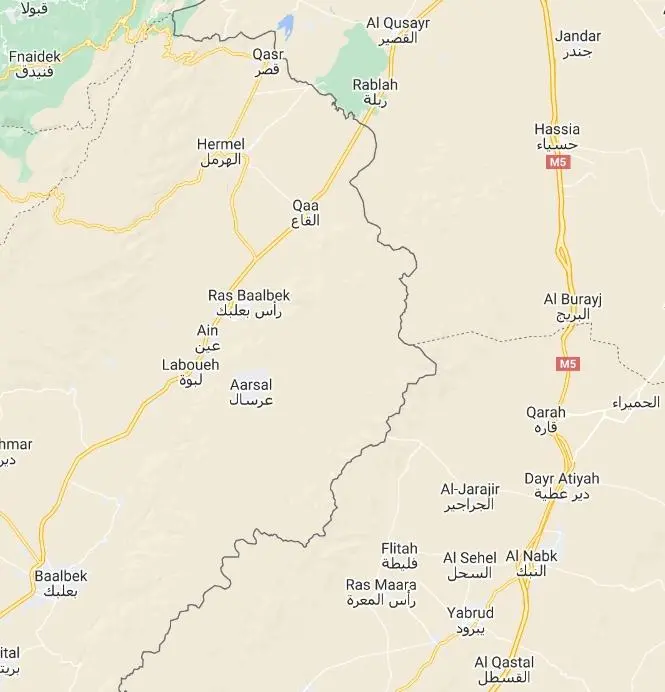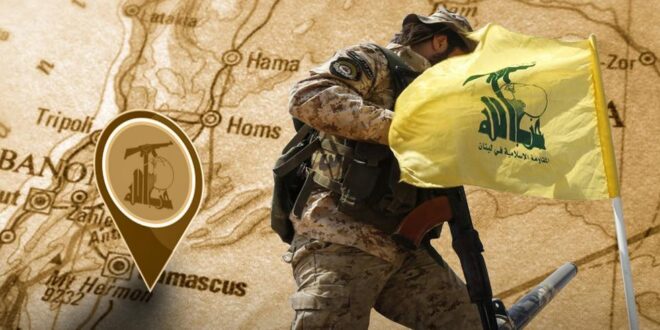For many years now, Hezbollah has served as a major instrument of Iran to take over Lebanon, not only as a territory but as a sovereign state. Many Western countries would like to avoid that and invest in the former “Pearl of the Middle East”, led by France. These efforts are futile in view of the Iranian circumvention apparatus, who’s main mechanism is allocated in the border crossings between Syria and Lebanon. No matter how much pressure is put on a state level, Hezbollah will survive and even prosper, as long as one does not put an end to Hezbollah’s control over these main smuggling routes.
The essentials
For decades, the border crossings between Lebanon and Syria have served as a life-line for the Lebanese. Over the last forty years, this has been the supply route for Hezbollah. This organization controls the crossings completely and smuggles through them, for example:
• Arms: Improved attack-drones, anti-tank systems, and missiles (for ex. Kornet-EM), RDX explosives, SA systems and missiles, precision guidance components;
• Illegal counterfeit money trafficking;
• Drugs: Captagon and Cocaine;
• Human trafficking;
• Staple food and basic goods, all of which allow them to take over the starving nation. Partly, these goods arrive officially, but mostly they are smuggled above and beneath the ground, in tunnels.
Hezbollah is dependent on the smuggling to thrive. This was evident to Hezbollah and Iran from the day of the foundation of this organization. Although Hezbollah is in no way the sovereign of the Lebanese territory, the Lebanese government is not capable of withstanding Hezbollah. Nevertheless, there is the need for keeping up appearances and covering up evidence, from both the Lebanese and the Syrian governments.
In the early days of the organization, smuggling would be performed by couriers, although these instances were small and not reality-changing. In the long run and with the help of the Iranian patronage, as well as a lot of patience, Hezbollah has built a diverse and smart smuggling apparatus through hidden passing points above and beneath the ground, apart from the formal border crossings. These passages are the basics for the growing military strength of Hezbollah since 2006.
Although Hezbollah gets all sorts of armament by air or sea, the most profound source of military strengthening is through the land routes between Syria and Lebanon. Still, why does Hezbollah need such tight control over the border crossings, one might ask? It seems that there is no real alternative for these routes, neither in access nor in quantity, let alone timing, a central factor when it comes to the security of the transports.
What started as a secondary benefit in the midst of the COVID-19 crisis, when Hezbollah started smuggling staple foods and essential products to build up a competing economy to the collapsing one of the Lebanese government, has grown into an impressive instrument in the hands of the Shia. Most of the goods reach only the Shiites, and only parts of it get to the general population, and such are meant to create a social gap and to crash and replace the Lebanese economy. Naturally, a high percentage of these goods are of Iranian origin.
The human factor
The Shiite route using the border crossings as a smuggling hub is protected by the economically and socially weak local population, who serve as a kind of “human shield” against enemies who would try to damage the arms, drugs, fuel, and money coming through.
This “human shield” includes two further elements. The first is the massive wave of refugees, with thousands of Syrians passing the crossings every day (over a million since the beginning of the Syrian civil war). While they are passing, they protect the trucks carrying smuggled arms into Lebanon. Borders crossings buzzing with refugees are no legitimate target for thwarting, to the world they are essential humanitarian routes. The second element is that of the guise of humanitarian aid. The trucks carrying weapons will look like they are carrying medical supplies and right beside the Hezbollah driver sits a woman with a baby in her hands. No one will stop the truck, even if they know it is supplying arms.
Unit 4400
Over the years Hezbollah built several different units that were in charge of smuggling into Lebanon. Today the main unit in charge is unit 4400, and it includes sub-units that are in charge of secure transportation and other logistics to run the operation. The commander is named Haj Fadi (Muhammad Jaafar Qusayr). The major change came in 2011, shortly after the civil war in Syria started. Hezbollah knew then, that this was the time to enhance the control over this whole area of Syria.
The main steps were:
First, they had to strengthen the presence of Hezbollah forces within Syria along the Lebanese border, in order to facilitate a better working environment for the active units dealing with the smuggling. Although the reality on site changed over the years and the location of the units varied, the transport and smuggling unit’s presence and their coordinated cooperation with their Iranian counterparts stayed stable. One of these Iranian units is 2250, who’s commander, Sayyed Reza Mousavi, was eliminated in Syria several months ago.
It also includes the usage of Iranian militias in Syria and Iraq as part of this cooperation to control the turf and allow the transports into Lebanon. In several areas along the border, the Syrian Division 4, part of the regular Syrian army, but funded by Tehran, taking part in this smuggling activity. The commander of this Division and benefactor of its activity is Maher Al Assad, the younger brother of President Bashar.
The second layer is that of building a cartel-like apparatus within the border crossings. Hezbollah members infiltrate any position in the crossing management – police officers, customs officers, immigration officers, and other service providers – all of which become informers, the eyes and ears of the organization. This again includes bribing higher officials to turn a blind eye, or just threatening them to keep quiet.
The third and less known layer is the construction of smuggling tunnels between Syria and Lebanon. These tunnels have not reached the headlines yet, probably because they are not taken as a major threat to Israel as they allegedly do not infiltrate important areas and thus are less analyzed by Israel and the West. This might be a grave mistake as these tunnels allow the unhindered smuggling of advanced weapons systems and technologies, which will serve Hezbollah in the future.
The border tunnels
Most of these tunnels are on average 5-6 km long. Some are broad enough to allow a car to go through, others are meant for a motorcycle courier. They are meant not to draw any attention and are used only if needed. They were excavated by hand, at a pace of about 10 meters per week. The tunnels are covered, some leading into private homes. The sand is carried out in sacks, then cars, looking innocent to the untrained eye. This is a slow process meant to avoid the attention of Western intelligence services. There might also be longer tunnels, leading into the central nervous system of the organization in Lebanon.
The whole idea of the tunnel system has its origin in the Iranian doctrine, saying that anything that is crucial might be attacked from the air and therefore must go underground. The deeper the tunnels, the higher the importance. To Hezbollah and Iran, the supply lines through the border with Syria are no doubt crucial. In most cases, Hezbollah will keep apart crossings that are used for weapons and those that are used for fuel, drugs, and money. This allows him to lower the risk of losing everything in one strike.

Current events
Since the beginning of the current war in October 2023, Hezbollah opened at least three more unofficial border crossings near Qarah and Hassia to allow more smuggling. No doubt, that being most of the population in the area is Shiite, as this is part of the Bekaa valley, Hezbollah feels free to do as they want.
At the time when Ali Hamia, representing Hezbollah in the Lebanese parliament, served as Lebanon’s minister of transportation, he allocated funds for new border crossings. In fact, the state was funding Hezbollah interests. Hezbollah always craved to hold this position of minister, and after using Amal to do its bidding in this ministry, it finally got what it always desired.
For years Israel was keen in its decision not to attack the border crossings and only recently they attacked a vehicle near the “al Massna” crossing, the main passing point on the Damascus – Beirut route. On the other hand, convoys on their way to the crossing points are being attacked as they go through Syria.
Finally,
The official and unofficial border crossings between Lebanon and Syria are the lifeline of Hezbollah, crucial for their survival as well as military and social strengthening.
It is time for the West to take off the gloves and engage the supply routes that provide the survival capabilities of this terror organization and in such to foil the ultimate collapse of the state of Lebanon into the hands of Hezbollah and their Shiite patron, Iran.
 Eurasia Press & News
Eurasia Press & News

